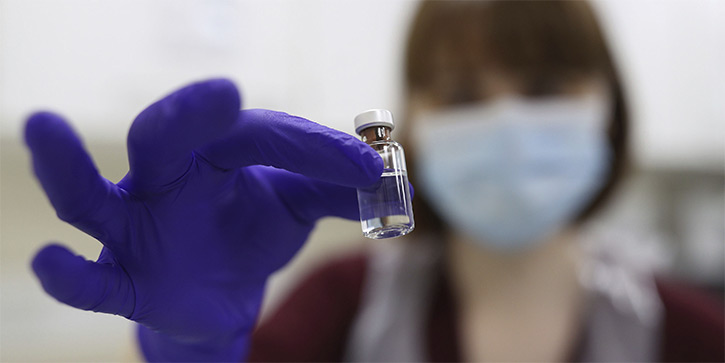Economic Herd Immunity Will Take Awhile

Governments around the world met this pandemic in various ways, ranging from brutal, near-universal lockdown in China to Sweden’s laissez-faire voluntary approach. And everything in between.
While some methods seem to have worked better than others, this isn’t over yet. We have seen the virus resurge in places that thought it was defeated. It’s not going away easily.
One problem: Some of us have trouble accepting the virus isn’t human. It doesn’t care who you are. It has no interest in your politics. It won’t respond to threats. Given opportunity, it will infect you. Nothing personal; that’s just what viruses do.
But being humans with superior knowledge, we should eventually win.
Soon we will know if the new vaccines work on large populations. We don’t have to vaccinate everyone, just enough to reach “herd immunity.” When each infected person infects, on average, less than one other person, the virus will start fading away. Then we can all go shopping again, and the economy can pick up where it left off.
But that won’t happen overnight. It’s going to take time… a lot more time than many people think.

Source: Pixabay
Big Priority List
Vaccine news has been coming fast since my last post. The United Kingdom approved Pfizer’s vaccine and will begin distribution shortly. Russia began deploying its own vaccine. The US may not be far behind.
As with the virus itself, the vaccine won’t have equal impact. It will go first to those in the most danger. If it goes well, this initial deployment should noticeably reduce deaths and hospital loads. That will be wonderful, but it won’t be enough.
The first problem: The US “priority” population is huge. Ariadne Labs estimates it this way:
- 19.3 million healthcare workers and first responders
- 92 million patients (all ages) with one or more comorbidities
- 1.3 million people over 65 without comorbidities
- 2.3 million age 65+ in congregate living arrangements
- 22 million essential workers not already in other categories
- 6.7 million homeless
- 0.7 million incarcerated
… which adds up to about 144 million people. Total US population is about 330 million, so close to 56% of us are not in the initial groups. We’ll be safer but not safe, because 144 million probably isn’t enough for herd immunity. The virus may still be spreading.
Super September
Next question: How soon can we vaccinate that many people? Several constraints will dictate the answer. One is how fast Pfizer (PFE) and Moderna (MRNA) can produce vaccine doses, and it appears to be taking longer than initially thought. There may be 35–40 million doses available by year-end. Since each patient needs two, that’s enough for 20 million people.
Dr. Bob Wachter of University of California, San Francisco, reviewed the production schedules and estimates the US can vaccinate 150 million people by June and the entire country by December. He made this handy chart to show the progression.

Source: Bob Wachter, MD
If this is right, and you are an American not in one of the groups listed above, you won’t get the vaccine until June at best, and probably later.
The good news is we should reach herd immunity (which Dr. Wachter thinks is around 70%) by September 2021. It might be a little sooner, depending on how much immunity there is in the large (and still growing) population who were infected and survived.
But one way or the other, by year-end the vast majority of Americans should be safe from COVID-19. Everybody who wants a vaccine should have had a chance to get it. Some will resist but Wachter thinks they will be a relatively small number.
But economically, that’s not the end.
Best Customers Last
This vaccination timing matters to the economy. It means that all our current precautions—masks, crowd restrictions, capacity limits—all those things will continue for at least six more months, and probably longer. That’s the best case.
One not-so-little detail people are missing about the Pfizer and Moderna vaccines: The trials show recipients may still carry the virus even if it doesn’t make them sick. Pfizer CEO Albert Bourla admitted this in an NBC news interview just last week.
If so, person-to-person transmission may not drop as quickly as hoped, and the economically problematic restrictions will have to stay in place longer.
One more thing…
Notice who isn’t on the vaccine priority list: healthy, middle-aged people in non-essential occupations. That means the corporate executives, lawyers, accountants, computer experts, investment managers, journalists and others who now mostly work from home. They represent a disproportionately large part of consumer spending.
So the people the airlines, hotels, restaurants, theaters, and retailers need most—their best customers—will be the last to get vaccinated, and therefore the last to resume normal economic activity.
That’s the right way to do it: protect the most vulnerable and their caregivers first. But it will delay the economic recovery.
Right now I hear a lot of people saying life will start getting back to normal in April or May. Maybe so, but stress the word “start.” Very little will be normal by then.
Everything I see says we are maybe halfway through this marathon. I’m not sure people and businesses are prepared to wait that long. And I’m certain financial markets aren’t.
See you at the top,



